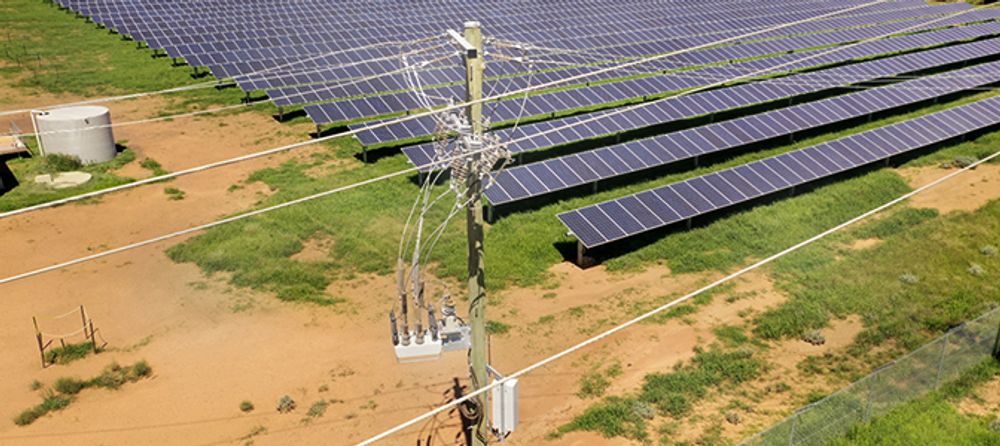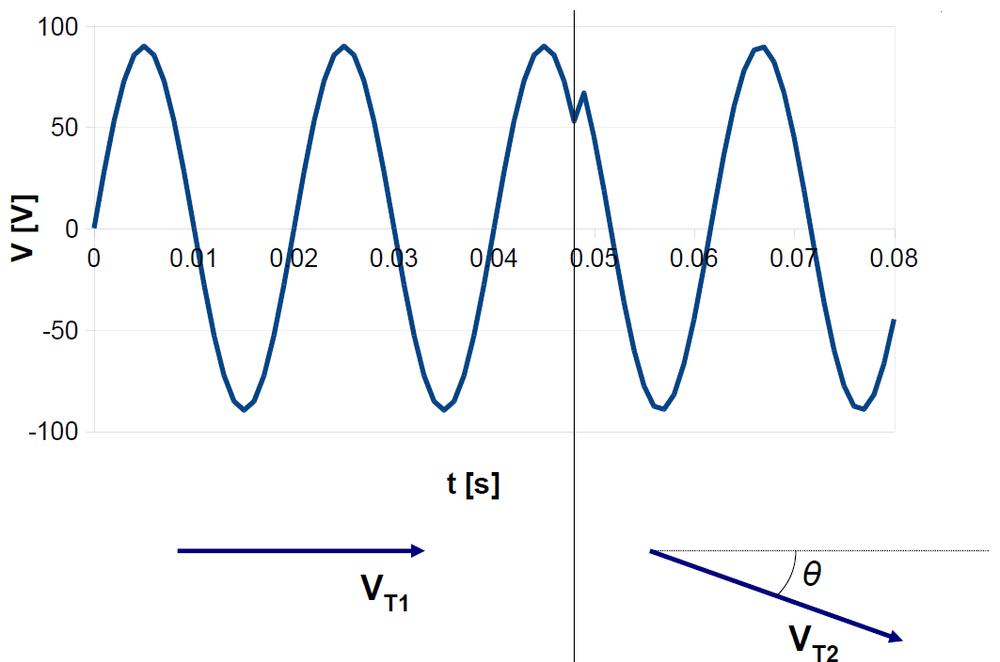Technical Article
Updated 09/2024
Understanding Voltage Vector Shift
Interpreting the operating principle of ROCOF’s Cogeneration Companion, ANSI 78 VVS

Grid wide proliferation of distributed generation (DG) is a constant theme throughout the electricity distribution grids of the globe.
Connecting Renewables?This increase in DG provides a method for decarbonization of the energy supply chain, but simultaneously creates technical challenges for distribution network service providers or network operators. These groups are grappling with the challenges of network islanding and bi-directional power flow on networks that were originally designed with centralized generation in mind.
The oft cited challenge with DG is the concept of islanding, as we cited in our content on ROCOF (read here), where a portion of a distribution network disconnects from the main grid and remains operational. The debate rages whether this should be allowed or is a safety issue, but the broad utility consensus today is that islands should be detected and powered down under occurrence – essentially that DG is fine, provided the grid remains interconnected. The key motivation for this viewpoint is the consideration of safety, specifically mitigation of a scenario where operators assume lines are deenergized when in fact they may remain energized from other sources.
And so anti-islanding protection techniques have emerged, broadly classified into active or passive categories. Active anti-islanding techniques attempt to influence the power generation grid, under the assumption that these changes should be overwhelmed by the inertia of the grid if they are still connected. If the DG source can significantly change the quality of supply, it can be assumed it has “too much power”, meaning it now has control of local supply and an island has formed. These techniques work well but are confined to the inverters themselves.
Passive techniques include ROCOF and VVS – elements which monitor system frequency and voltage to determine if the island has occurred. Whilst ROCOF is concerned with frequency mismatch caused by a mismatch of load and generation in an island scenario, Voltage Vector Shift specifically looks at the phase angle of the voltage, measured at the grid connection point.
The operating principle between these two features share a commonality – both protection elements assume that the island of DG and load are inherently mismatched. While ROCOF uses the expectation that frequency will drop or increase depending on the load when an island forms, VVS assumes that the amount of power output demanded by the generator (excess or shortfall) will cause an immediate shift of the voltage angle leaving the generator.
VVS protection checks each half cycle of voltage at the measurement point. With the previous voltage half cycle as a reference, the function compares how much voltage shift there is between consecutive voltage cycles. Under islanding, the general expectation is that this shift will be greater than 12 degrees (a commonly cited setpoint standard for VVS), for which the VVS relay initiates a trip.

This association with comparison between each individual cycle can make VVS a very fast protection device indeed, but the major proviso in its operation is the grid mismatch. Once again, as with ROCOF, these protection features are considered the standard for DG connection, but they share a non-detection zone when the load and local generation are closely matched. In fact, despite the speed of VVS operation, a generator output increase of 66% may only result in an angle shift of slightly over 6 degrees (Dysko © 2013).
Therefore, network scenario analysis needs to ensure that the protection settings applied consider the likely load/generation mix in the emergence of a grid island. These protection systems are effective, but appropriate analysis need be applied.
“Voltage vector shift is another important tool available to protection engineers in our electricity utility customers to assist with disconnecting distributed generation under islanded conditions,” reports NOJA Power Group Managing Director Neil O’Sullivan. “Our products are more and more regularly used as the connection point for large scale renewable energy to the distribution grid where these protection elements are essential tools.”
VVS and ROCOF remain the core features of DG connection, and NOJA Power’s OSM Recloser system can be supplied with both these features as standard. For renewable and DG sites, the OSM Recloser can be used as the point of connection to the grid, fulfilling the protection obligations of renewable energy generation connection using the environmentally friendly, SF6 free NOJA Power OSM Recloser. This integrated model reduces costs on commissioning, simplifies installation and improves the payback period of new renewable energy generation sites.
References
Dysko, A. (2013), Loss of Mains Protection, University of Strathclyde Engineering presentation.
NOJA Power © 2020, OSM Recloser User Manual, NOJA Power Technical Documentation
Want to stay up to date with Electrical Distribution Technology?
Join our list for a free weekly technical bulletin, as we share our Global Electrical Engineering experience directly to your inbox.
Subscribe →